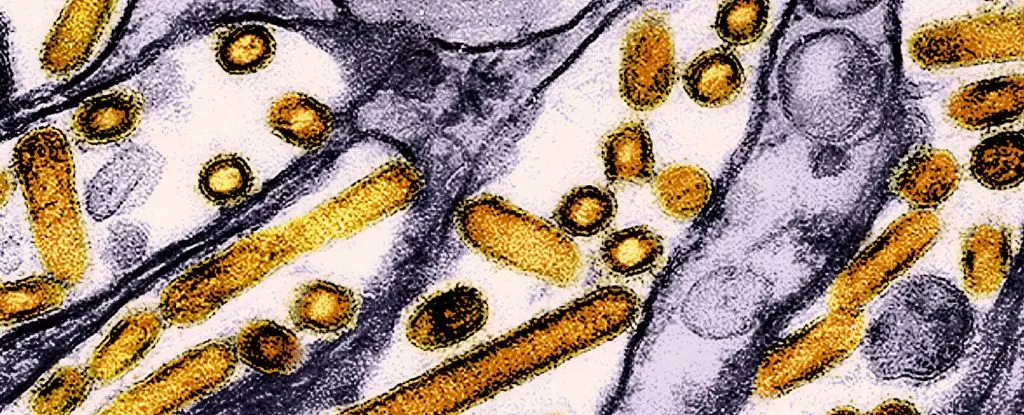The emergence of highly pathogenic avian influenza (HPAI), particularly the H5N1 strain, has long hovered over the global agricultural and public health sectors as a significant threat. Recent blood sample analyses from dairy workers in Michigan and Colorado shed light on an alarming aspect of this issue: the unnoticed transition of this avian virus into human populations.
A study conducted by researchers from the US Centers for Disease Control and Prevention (CDC) has revealed that approximately 7% of dairy workers tested exhibited antibodies indicative of previous exposure to the H5N1 virus. This alarming statistic, drawn from a cohort of 115 workers between June and August 2024, underscores a concerning trend: potential human infections are occurring without significant awareness or reporting among those affected. Notably, nearly half of these individuals did not report experiencing illness, suggesting that a number of cases may present only with mild symptoms or even go asymptomatically unnoticed.
This finding suggests a paradox; while the infection rate appears low, indicating that the current threat to public health remains minimal, the silent presence of the virus in humans stands as a testament to its potential resilience and adaptability. The implication is clear: unchecked circulation of HPAI could engender conditions conducive to the virus’s evolution into more virulent and possibly transmissible strains.
Recent events in Cambodia illustrate the dire consequences that can accompany the unregulated spread of the bird flu. Reports indicate that a hybrid strain capable of infecting mammals, which resulted from genetic mixing between two previously categorized strains, has been responsible for fatal infections among humans. This raises vital questions about the trajectory of HPAI and the immediate need for vigilance and prompt response mechanisms to address possible outbreaks.
Moreover, the situation transcends borders as Canada becomes the latest to document a human case of bird flu, with a teenager presently in critical condition due to a mutated strain linked to dairy cattle outbreaks in the US. Such developments serve as stark reminders of the dynamic interactions between human and animal health and how quickly a localized event can escalate into broader health crises.
The dairy workers who tested positive for antibodies provided critical insight into the risk factors associated with exposure to HPAI. Most were engaged in routine farming activities, such as milking or cleaning, yet a lack of adherence to recommended personal protective equipment (PPE) guidelines was observed. The CDC’s findings highlight a harmful gap in training and resources dedicated to protecting these essential workers, many of whom are Spanish speakers and may not receive adequate safety communications.
In this context, it is essential to bolster educational outreach, ensuring that workers understand the risks associated with exposure to infected livestock and the measures they can take to safeguard their health. This calls for culturally appropriate training initiatives to enhance understanding and compliance with infection prevention protocols.
Increasing global reporting mechanisms regarding animal health, especially among avian populations, is paramount. Agencies and authorities are urging the public to maintain vigilance by practicing good hygiene when interacting with animals and reporting instances of sick or deceased birds. Signs of avian flu infection in animals include a multitude of symptoms, ranging from lethargy to disorientation, which should not be overlooked.
Notably, the culling of over 90 million domestic birds due to the HPAI outbreak since 2022 reveals the scale at which this issue affects the agriculture sector, raising food security concerns. In response to the ongoing crisis, innovative vaccination programs targeting at-risk species, such as California condors, are underway to mitigate further impacts.
Overall, the uncovering of these developments demands a multifaceted response. Continued research into both avian and human health must be prioritized, alongside effective vaccination strategies that can help shield vulnerable populations from the threat of bird flu. Collaborative efforts across sectors—health, agriculture, and public policy—seem crucial in not just managing the outbreak but also in developing a robust framework that can preemptively address future threats posed by zoonotic diseases.
As the specter of the bird flu looms, the intersection of public health and agricultural practices must be intricately navigated to protect both human communities and livestock populations against the advancing tide of avian influenza. The insights gleaned from ongoing studies can guide strategic responses essential for safeguarding futures, both for individuals and the broader ecosystem.


Leave a Reply